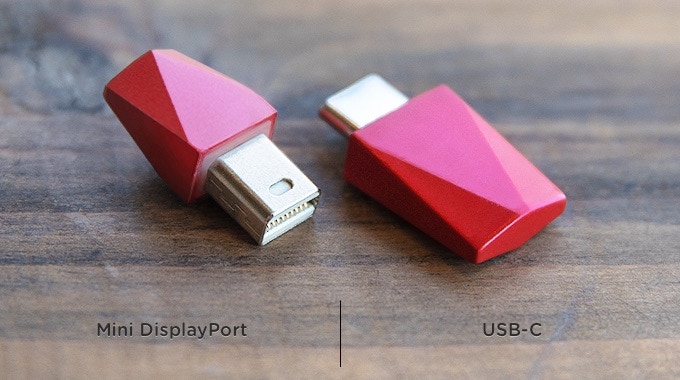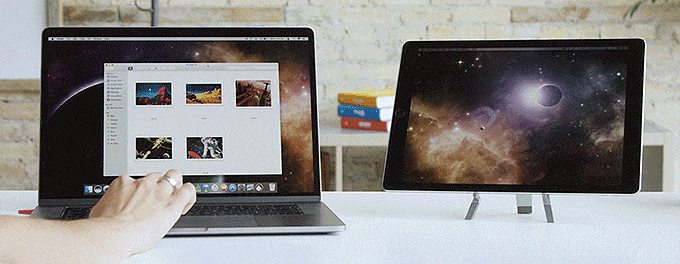Apart from kids in the backseats of minivans, how often does anyone really use their iPad?
I’d say probably not enough to cover their value — considering their limited mobile operating system and screen sizes.
Luna Display, however, is aiming to change that with a miniature hardware solution that turns an iPad into a touchable secondary Mac display.
The little red device — which looks like a small USB key — can be inserted into a Mac’s Mini DisplayPort or USB-C port (depending on version) and connects to the iPad over Wi-Fi through a free app — though it works over USB connection, too.

LunaDisplay says its hardware connection is preferable over a software-only tool, because whereas software apps hack the graphics card and trick the Mac into thinking a display is attached without the benefit of graphics acceleration or Metal 2 GPU support, the device harnesses the graphics card, gaining the full benefit of graphics acceleration.
The company behind the device, Astro HQ, uses its own proprietary LIQUID display technology, which promises “hand optimized ARM assembly” for maximizing battery life and velocity control for analyzing network conditions dozens of times per second.

Not only is the display improved over software solutions, Luna Display also allows the iPad to be a full extension of the Mac. Users can use it just like a mini, more portable Mac with an external keyboard, Apple Pencil or their hands.
The device works with Macs running macOS 10.10 Yosemite or later and iPads running iOS 9.1 or later.
For optimal performance, the company behind the gadget, Astro HQ, recommends using the 2012 or later versions of the MacBook Air, MacBook Pro, Mac mini or iMac, and the late 2013 version of the Mac Pro. On the iPad side, the company recommends the iPad 2 or later, any iPad Mini and any iPad Pro.
Currently, the Luna Display is funding itself on Kickstarter, charging $80 CAD for a USB-C or Mini DisplayPort device that has an estimated delivery of May 2018.
Verdict: Sticky!
Any gadget that makes my iPad more valuable is intriguing in my books — though an upgrade from paperweight isn’t hard. But Luna Display, at least in theory, goes above and beyond in its approach, delivering a solution that many professionals would delight in using.
After all, a large portion already use secondary displays at work. Make it a secondary display that you can easily tote around and the deal becomes that much sweeter. Plus, it’s reasonably priced.
It’ll be interesting to see the final result of the Luna Display — but for now, it gets a sticky-fingered stamp of approval from me.
MobileSyrup may earn a commission from purchases made via our links, which helps fund the journalism we provide free on our website. These links do not influence our editorial content. Support us here.


